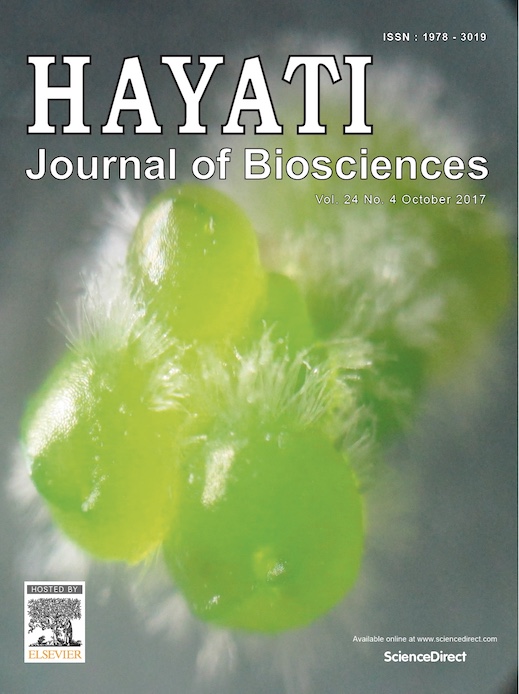Molt in Birds Inhabiting a Human-Dominated Habitat
Abstract
Molt is one of the biological processes in the life of birds that requires high energy. Therefore, it usually occurs when food is abundant. However, molt and breeding overlap have been recorded in the tropics. There are very few studies on bird molting patterns in Indonesia. This study aimed at describing molt in birds that inhabit a human-dominated habitat in Bogor Agricultural University Campus in Bogor, West Java. Molt of primary feathers of adult birds were checked during bird monitoring using mist nets from August 2010 to December 2013. Occurrence of brood patch as indicator of breeding stage was also recorded. Molt data were obtained from 230 adult birds from 29 species. Molts occurred from February to December, with most birds having active molts in July and October. Breeding occurred in March, April, July, and October, with the peak of breeding occurring in March. Molt and breeding overlap were identified only in three species, i.e. Eurasian Tree Sparrow (Passer montanus), Horsfield's Babbler (Malacocincla sepiarium), and Scarlet-headed Flowerpecker (Dicaeum trochileum). This study suggests that resources in the study site are available for conservation of bird community in human-dominated habitat. However, further research is needed to assess food availability and bird breeding success.Downloads
HAYATI J Biosci is an open access journal and the article's license is CC-BY-NC. This license lets others distribute, remix, tweak, and build upon author's work, as long as they credit the original creation. Authors retain copyright and grant the journal/publisher non exclusive publishing rights with the work simultaneously licensed under a https://creativecommons.org/

























.png) IPB University
IPB University Department of Biology
Department of Biology The Indonesian Biological Society
The Indonesian Biological Society 

